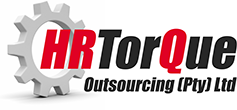To promote a culture of respect and prevent any form of harassment or discrimination, Government implemented the Code of Good Practice on the Elimination and Prevention of Harassment in the Workplace in March 2022. This code, in conjunction with the Employment Equity Act, provides clear guidelines for employers on how to create a safe and supportive working environment for all employees.
The Code of Good Practice on Harassment is a comprehensive set of guidelines that outlines the responsibilities of employers in preventing and addressing harassment in the workplace. It includes:
- Harassment policy: The first requirement for employers is to establish a clear and robust harassment policy. This policy should explicitly define harassment, provide examples of unacceptable behaviour, and outline the consequences of violating the policy. The policy must be communicated to all employees and be easily accessible within an organisation.
- Risk assessment: Risk assessment involves identifying and evaluating factors that could contribute to the occurrence of harassment incidents within an organisation. The purpose of this assessment is to proactively identify potential risks and take appropriate measures to prevent and address harassment effectively.
- Training and awareness: Employers must provide regular training to all employees, supervisors and management on the prevention of harassment. Training sessions should raise awareness about the different forms of harassment, the negative impact on individuals and the organisation, and how to report incidents. By educating employees, employers empower them to recognise and prevent harassment effectively.
- Reporting mechanism: Creating a safe environment for reporting harassment is crucial. Employers must establish a confidential and accessible reporting mechanism that allows employees to report harassment incidents without fear of retaliation. The process should be fair, impartial, and include appropriate procedures for handling complaints.
- Appoint designated person: Management should designate a person outside line management where employees can obtain confidential advise and/or counselling. This person must be adequately trained and given the appropriate resources to adequately do their job.
Creating a workplace free of harassment is both a moral and legal obligation, and failure to actively promote equality in the workplace and avoid any form of unfair discrimination could land employers in the CCMA.
Any employers who have unfair discrimination awards against them at the CCMA will not be eligible for their Employment Equity Compliance Certificate. This certificate may be required for tenders, BBBEE and/or work with government organisations.
Our HR team is ready to assist you with compliance in both employment equity and harassment in the workplace. Contact us today for more information.

